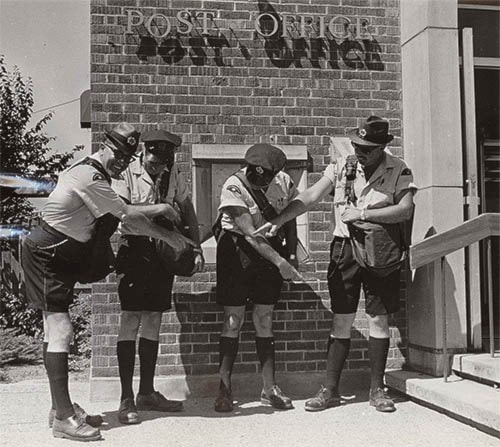Do you remember learning how to write?
Practising in your school notebooks, repeating cursive letters of the alphabet, until finally mastering each individual script, then joining each letter, composing full sentences.
Now can you remember the last time you sat down to pen a letter? Not an e-mail, but a letter that requires a stamp and a trip to the post office to mail it.
There is no denying that technological advances have made people connect with one another faster and at an easier rate than in decades past.
But as we shift in the way we communicate with each other, some human interaction does get lost.
In the museum collection there is a “calling card tray,” a family heirloom of the Sinclair family of Haney, used in the early 1900s. It was proper etiquette when calling on a household, to leave a card for the head of the household, or others if they were not home.
In upper class houses, a servant would typically answer the door with a tray similar to this at the ready.
The equivalent today might to send a text message, or to call and leave voice mail for someone if they are not home.
Although the majority of our words are now typed to each other electronically, it is still important to utilize our writing skills. Not only so we will be able to fill out routine forms, but writing also allows us to practise our hand-eye coordination and from a historical perspective, knowing how to read and write cursive is still an imperative tool.
Transcription is a large part of the work done at the museum, and knowing how to read longhand is essential. Being able to keep the words alive from the diaries of early settlers to the area is a continued resource. Even after they are transcribed, it is vital the original source can still be read.
Besides preserving the written word for historical means, the act of letter writing and sending information to communicate with others through the postal system was (and arguably still is) the cornerstone of a community. In 1874, Maple Ridge was incorporated as a district when eight separate communities realized that they would be further ahead to pool their resources. Having a shared postal operation was one of them.
The first post office in Maple Ridge opened on Oct. 1, 1876, with W.J. Howison as postmaster. His store and post office was located on the present Pine Street, just south of Maple Ridge Hospital.
In this early business centre of Maple Ridge, there was also the school, a boarding house, Mr. Isaac’s store, and the Methodist church, which stood on River Road east of Laity Street.
In 1885, the Maple Ridge Post Office closed to make way for new offices in Port Haney and Port Hammond, both named after founding citizens. The Whonnock Post Office also opened in 1885.
All three of these openings were related to the coming of the CPR and its stations. As postal districts became larger and door-to-door delivery from a central station more common, all the local postal addresses were gradually taken under the umbrella of “Maple Ridge”. The name of the first and most short-lived local postal address was to be applied to the whole district as of 1970.
While there is certainly no denying that all of our handwriting has suffered with computerized text, it does not mean that our communication needs to. We already process the skills, they just need to be dusted off and practised every so often.
Allison White is
curator of the Maple Ridge Museum.
